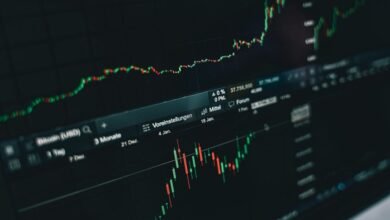8889050498 Top Picks for Growth Stocks in 2025

As the investment landscape evolves toward 2025, identifying promising growth stocks requires a careful analysis of valuation metrics, innovation potential, and scalability. Companies with high future earnings potential often exhibit elevated valuations but may also represent strategic opportunities if their financial resilience and growth trajectories are sound. Investors must weigh these factors against risks of overvaluation, considering how management’s capital allocation could influence long-term performance. The criteria shaping these selections suggest a nuanced approach, prompting further examination of key influences on future winners.
Key Factors Influencing Growth Stock Selection
As the investment landscape anticipates the opportunities and challenges of 2025, analysts are turning their focus to growth stocks poised for substantial expansion. Central to this examination are market valuation metrics, which serve as vital indicators of a company’s potential for future performance. Growth stocks often exhibit elevated market valuations relative to their current earnings, reflecting investor optimism about their innovative capabilities and scalable business models. However, such high valuations necessitate careful scrutiny, as they can also signal overconfidence or inflated expectations.
Investors seeking freedom through strategic diversification must therefore balance the allure of rapid expansion with the inherent risks associated with overvalued assets.
In addition to valuation considerations, dividend policies of growth-oriented companies provide critical insight into their financial health and strategic priorities. Many growth stocks reinvest earnings to fuel expansion rather than distribute dividends, positioning their dividend policies as a reflection of long-term growth strategies.
Nevertheless, some companies may adopt a hybrid approach, offering modest dividends to attract income-focused investors while retaining sufficient capital for aggressive expansion. Forward-looking analysis emphasizes the importance of understanding these dividend policies, as they influence both investor confidence and the perceived stability of the stock.
Companies with flexible dividend policies and prudent capital allocation strategies are likely to sustain their growth trajectories without compromising financial resilience.
Conclusion
Ultimately, as investors chase the next big thing, they must remember that high valuations often mask underlying risks. While these growth stocks promise innovation and scalability, overvaluation remains a constant specter. Ironically, the very companies fueling optimism may also harbor vulnerabilities that threaten long-term resilience. A careful, analytical approach—balancing growth ambitions with prudent risk assessment—will be essential to navigate the evolving landscape and avoid falling prey to the allure of fleeting market exuberance.





